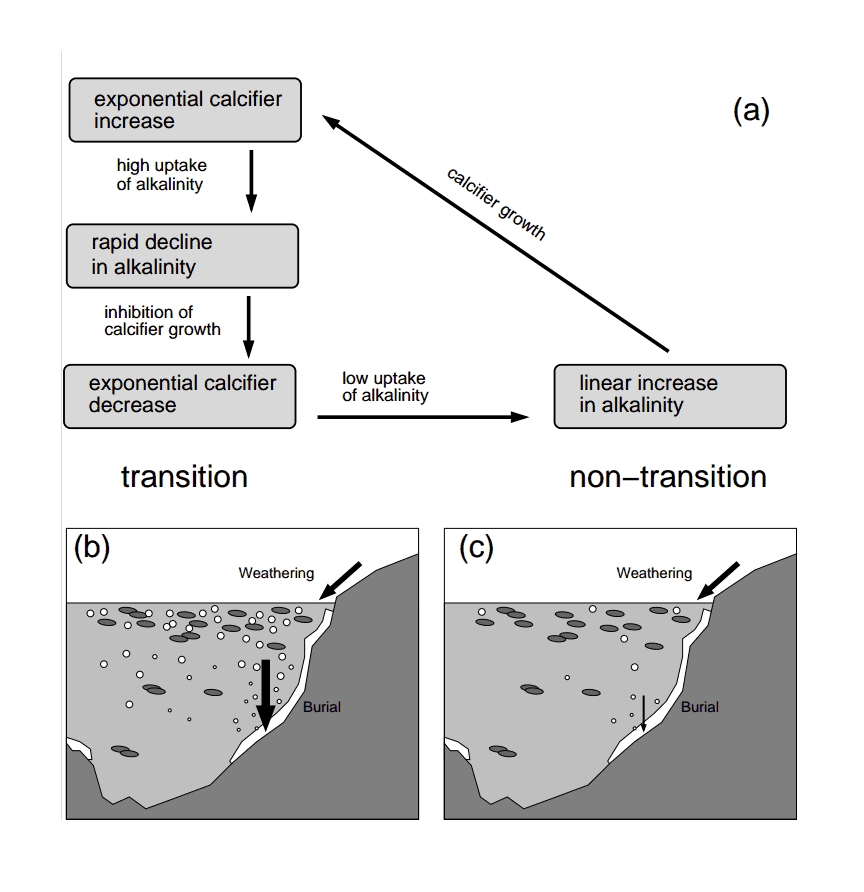On the potential role of marine calcifiers in glacial-interglacial dynamics

A schematic overview of the sequence of events throughout a calcifer-alkalinity cycle
Ice-core measurements reveal a highly asymmetric cycle in Antarctic temperature and atmospheric CO2 over the last 800,000 years. Both CO2 and temperature decrease over 100,000 years going into a glacial period, then rise steeply over less than 10,000 years at the end of a glacial. There does not yet exist wide agreement about the causes of this cycle or about the origin of its shape. In this article, recently accepted in the journal Global Biogeochemical Cycles, Darwin researchers Anne Wilem Omta, Mick Follows and co-authors, explore the possibility that an ecologically driven oscillator may play a role in the dynamics.
The conceptual model, describing the interaction between calcifying plankton and ocean alkalinity, shows several interesting features. Foremost it generates an oscillation in atmospheric CO2 with the characteristic asymmetric shape observed in the ice-core record, second the system can transform a sinusoidal Milankovitch forcing into a sawtooth-shaped output, and finally there are spikes of enhanced calcifier productivity at the glacial-interglacial transitions, consistent with several sedimentary records.
The author’s interpret these features to indicate that ecological processes might play an active role in the observed glacial-interglacial cycles.
PublicationOmta, A.W., G.A.K. Voorn, R.E.M. Rickaby, and M.J. Follows (2013) On the potential role of marine calcifiers in glacial‐interglacial dynamics (accepted in Global Biogeochemical Cycles), doi: 10.1002/gbc.20060



